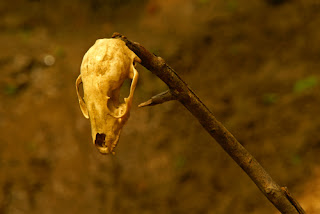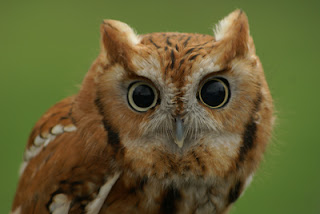I’ve said a time or two that I’d rather be good than lucky. Although luck certainly plays a role in capturing some amazing photo’s, combining the technical with a willingness to do what it takes to capture great moments will produce far more opportunities for great shots than simply relying on luck.
Getting the shot requires one to use a combination of four things:
Technical Understanding of the Photographic Process
Look Beyond the Obvious
Anticipate the Potential
Being There When the Light is Right.
Getting all four to coincide with each other…well, sometimes that requires a bit of luck at the very least, perseverance most certainly…and not necessarily in the same order every time.

Let’s talk about those four things as they pertain to a couple of selected images. Take for instance this shot of the dragonfly…a Carolina Saddleback to be specific…First of all the technical understanding involved required several things to make it happen including knowing how the camera was going to react to the light. Notice the background…it is rather dark in nature and even though our subject is well lit, that dark background will throw off the camera’s metering. I shoot most often using Matrix or Wide Area metering where the camera looks at the full spectrum of light in the view in deciding what exposure it wants to use. The camera will want to average the light it meters and set an exposure based on that average, so the dark background would cause the subject to be overexposed and blown out. Knowing this, I used the cameras +/- exposure compensation feature to tell the camera to react the way I wanted it to…not the way it wanted to…and set the exposure to -.7. I also set the aperture to as large of an opening as the zoom lens would allow for the focal length that I was using, f/6.3…this allowed me to control the depth of field and keep it relatively tight, and the background soft.
In order to get this shot I also had to look beyond the obvious…it would be a common technique to simply point the camera at the dragonfly and snap away without taking into context the background until a shot happened to capture my subject, provided I could catch it standing still long enough to do so. The point here is to think in terms of how best to isolate the subject, and that required thinking through the problem. First of all, I simply sat down on the edge of the pond and waited to see what would happen. Chasing dragonflies is all but impossible to do, as they flitter so fast, you really can’t hope to catch them…but they do tend to fly in patterns I noticed. As I watched all the activity flying around me, this one guy kept returning over and over to the same spot…a broken branch sticking out of the water. He would light for a second or two then take off again…then repeat the process over and over every few minutes…and that brings us to anticipating the potential. After a few minutes, I realized that was the best way to catch this guy, so I sat up my camera on a tripod…zoomed in as tightly as I could, pre-focusing on the end of the branch. Using a cable release, I was able to fire off several quick shots each time he landed, eventually getting this one best shot.
But…that is not all. How did I know where to place the tripod? First of all, I wanted to isolate the subject so I selected a location that offered a dark background at some distance from the subject to allow for blurring…and also offered a good source of backlighting to bring out the translucent nature of the wings. That required having the right kind of light…or at least using the light that was available to its best opportunity.

For the photograph of the canoe at first light I used a similar thought process, but approached it using different techniques. First of all, let’s talk about what it took to set up this shot…or anticipate the potential. Shanty Hollow Lake has become one of my favorite photo places as it provides a range of opportunities that differ from day to day and season to season. Having made numerous just-for-fun excursions there, I quickly recognized the photographic potential with the calm waters and foggy conditions being a common occurrence especially before sunrise during the late summer and early fall seasons. Sunrise was around 6:00 A.M. at the time, and I wanted to be in position well before that time. It required that I rise around 4:00 A.M. and make the 40 minute drive, then off load my canoe and gear, and make the paddle to the upper end, about a 20 minute trip by water. That put me on location a good half hour or more before sunrise…but even at that early time, there is significant light on the horizon…which is what I was wanting. The fog on the water began to lift and as the sun progressed closer to breaking free of the ridge to the east, that fog began to glow and was perfectly reflected on the mirrored surface of the water. My anticipation paid off, as I was there at the optimum time, being there when the light was right…lost a bit of sleep as a result…but, well worth the price.
But, to take the shot required understanding the technical nature of the situation. I had to make the shot by hand as shooting from the tripod would not be practical from the inside of a canoe. Using a wide angle lens, I set the aperture at f/5.6…which allowed just enough depth of field ( I focused on the front of the canoe) to keep everything pretty much in focus for the wide angle lens focal length, but also allowed for a fast enough shutter speed 1/125 at ISO 100 in the available light to keep from blurring the image with handshake. I used 0 +/- compensation as I wanted to capture enough light to show detail in the canoe and still grab the boldness of the light on the water without blowing it out.
Zero compensation pushed the exposure toward the middle range allowing for the detail to be captured in both the bright area and the darker canoe interior. Here is where the looking beyond the obvious came into play. I had to be careful not to allow the sunrise cliche to influence my shot so much that it dominated the composition, but I also wanted to show the boldness of the moment, plus it was important to include enough of the canoe to make it appear to be gliding toward the morning. That is why I tilted the camera angle down and placed the horizon very high in the composition. Centering the canoe was a matter of simply looking for reference points in the view finder and lining them up. The canoe in essence became the main subject of the composition, and the reflection of the glowing fog became the symbolic reference to greeting the new dawn.
So you see…taking a great photo is more than simply pointing and shooting…or even being lucky…it takes a degree of technical understanding, looking beyond the obvious, anticipating the potential, and being there when the light is right…combined with a bit of perseverance…you might be surprised at what you can accomplish.




































